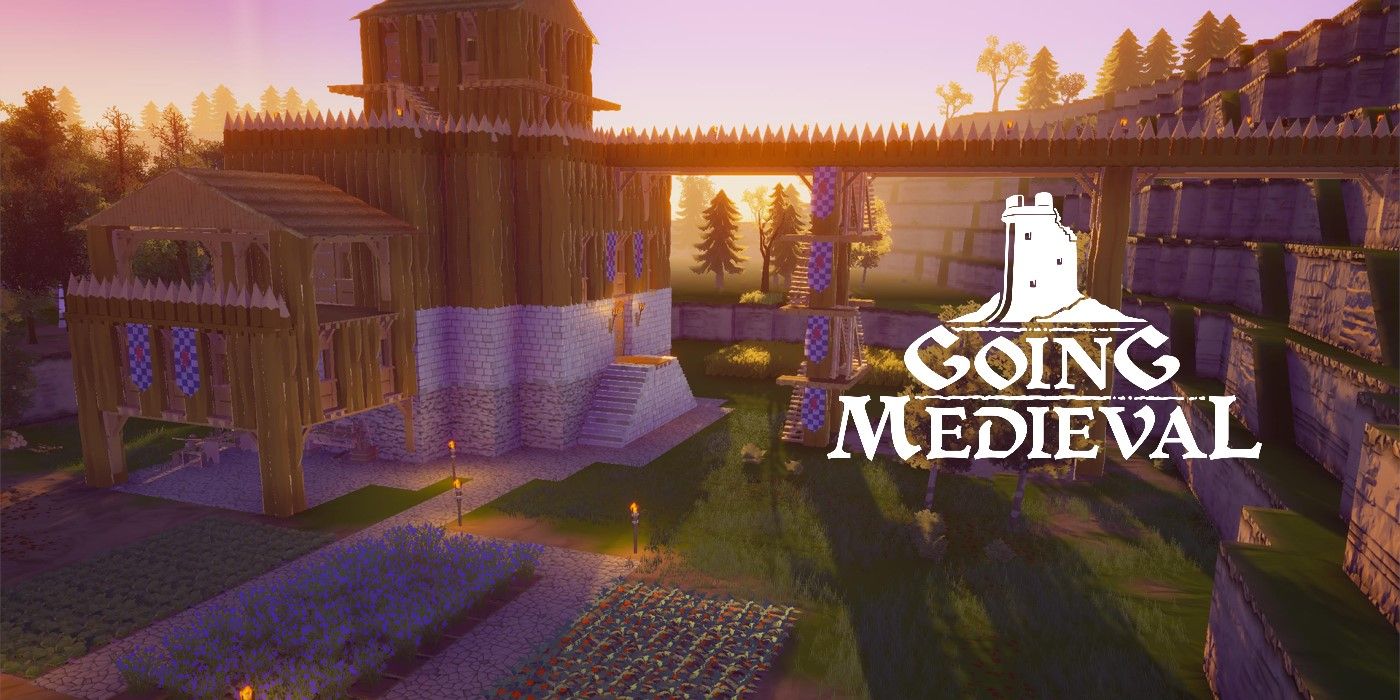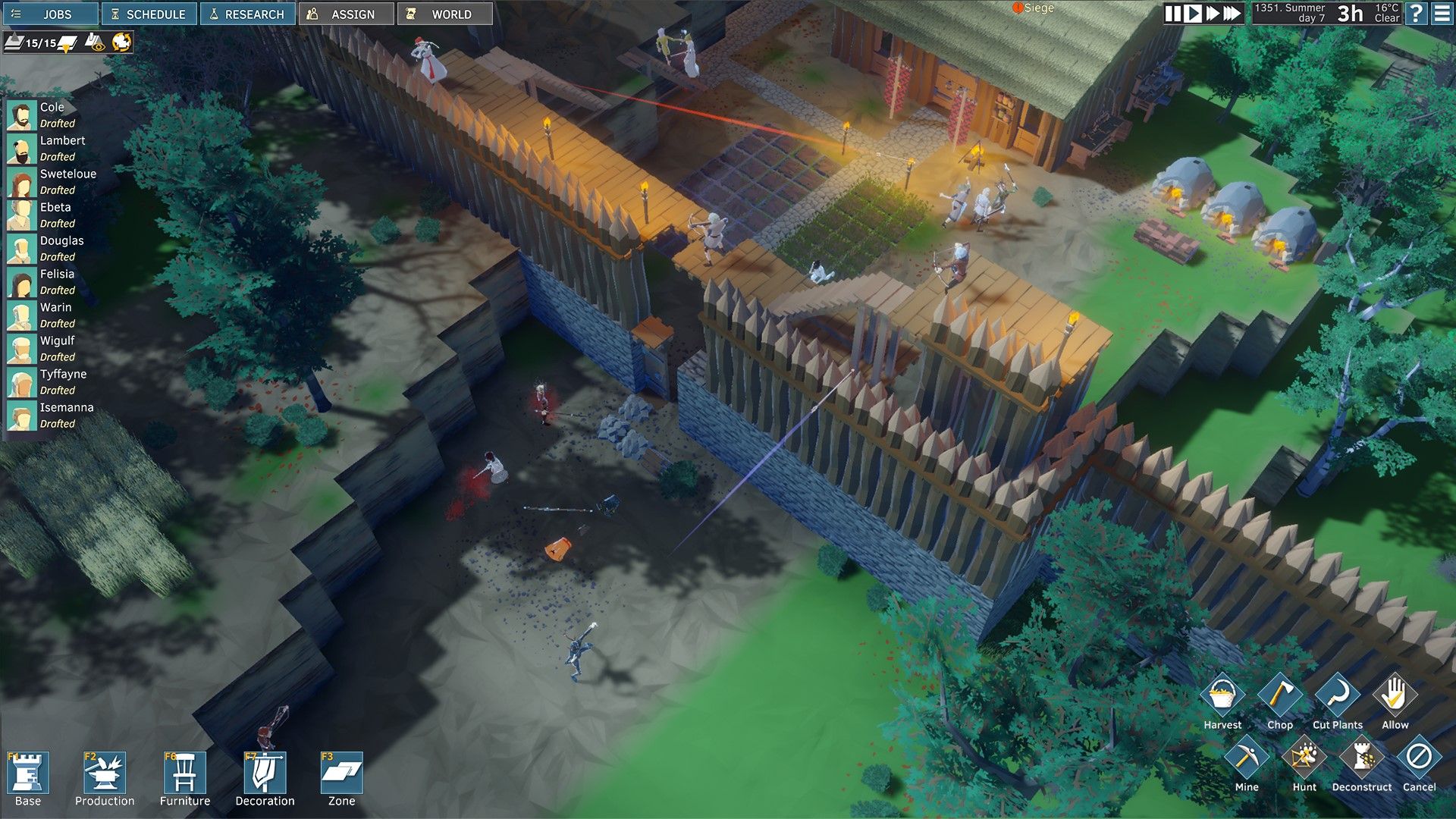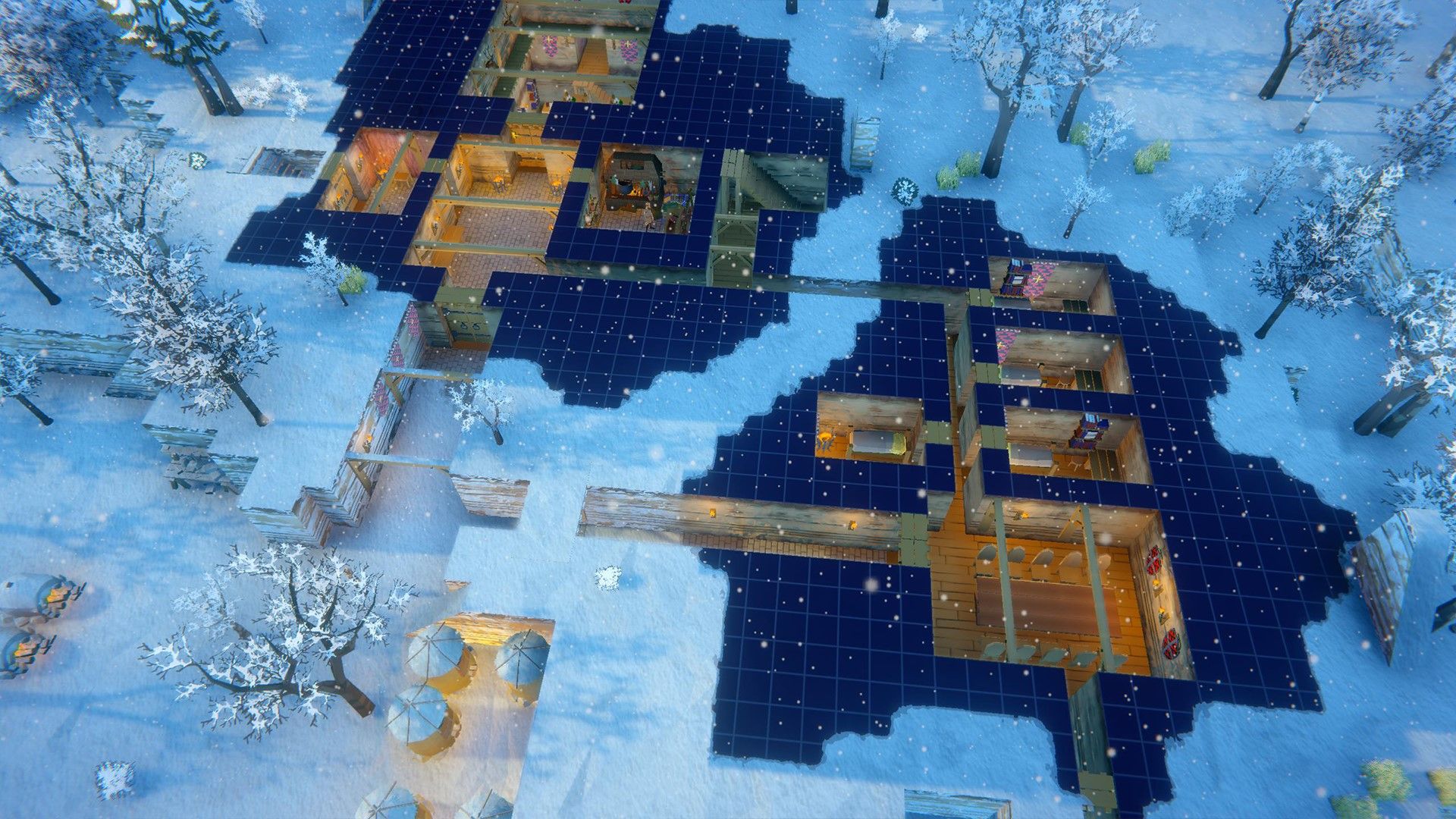Foxy Voxel and The Irregular Corporation are behind the upcoming simulation game Going Medieval. The game is currently in an Early Access phase — far enough along for fun gameplay, but not yet a fully realized game. Going Medieval has a fairly simple premise. It takes place at the end of the 14th century when a devastating plague has wiped out a decent chunk of the population. Players take charge of a group of settlers to help them build a new home from the ground up.
There are a few different difficulty options so players have the choice of taking it easy or jumping into a challenge. Difficulty can depend on a variety of different options. The first choice is whether or not the game will be played in a standard mode (some combat and some weather phenomena), peaceful (no attackers; focused more on caring for settlers), or a difficult mode where attacks are more prevalent.
The difficulty is also adjusted by how many settlers players start with. The “standard” could be considered three, but there’s also a “Lone Wolf” option for players who want to tackle starting a settlement solo. Players also get to design their own kingdom symbol and choose where they’re going to start their settlers’ lives. This is another aspect that factors into difficulty because resource abundance will vary based on each location. The mountains are great for gold and silver but have fewer edible resources. The valley and the hills are better choices for players who want access to resources right off the bat.
The hills also give an added advantage in combat situations, allowing players to get a better shot at the enemies as they approach. Enemies can be human or animal, though the animal ones are easier to deal with. They can simply be ignored until they go away. Humans, on the other hand, must be dealt with swiftly or else they’ll destroy the player’s work. Going Medieval has simple mechanics, but they work very well to make a pleasant (and frankly addictive) gameplay experience.
Aesthetically, the game isn’t as advanced as others, but that works to its advantage. It’s a unique style that suits players who care more about the mechanics than the visuals. That being said, the visuals aren’t bad — they’re just a unique style. Easy-to-use building tools help players create huts and homes for their settlers. However, players should observe their map area prior to building any structures to make sure they have a good idea of how they want their settlement to look. Otherwise, it’ll look like a mess as the buildings pile up.
This is unfortunately one of the downfalls of Going Medieval. The inability to move already existing objects makes the game more difficult than necessary. Instead of moving a butcher’s table, players must have a settler deconstruct it and then build a new one where they want it. This restriction makes sense for things like walls or roofs, but not usable objects. In later versions of the game, it would be nice to see this updated so only construction items and not usable objects must be destroyed to be moved.
Going Medieval has players go through the four seasons as they continue to grow and expand their settlement. Each season has well-animated weather, including rainstorms and snowstorms, capturing the essence of each season. Implementing weather and seasons into the game was a smart choice, with each weather phenomenon occurring not too often but not too little, either. However, seasons last for 12 in-game days, which can feel like forever in real-life time. It may make the passage of time more manageable for the player if the seasons were shortened by a day or two.
The game also takes advantage of random encounters, whether it’s adding a new villager to the settlement or fighting off a pack of assassins. They greatly enhance the gameplay experience, but unfortunately, there aren’t enough of them in the game’s current state. It feels like it takes entirely too long to have random people happen upon the settlement or for enemies to make their way to the vicinity. The rate of enemy spawning felt fine, but it would be nice to grow the settlement quicker with the addition of new people.
As for the settlers themselves, it was nice to see each of them have their own quirks and personalities. It was also interesting to have unhappy settlers become rebellious and no longer follow the schedule that the player made for them. It’s a very meta touch but works well within the game. It would have been nice to see how each settler felt about the others and what sort of friendship level they had. Though there might not be a place for them, the ability to have and raise children within the settlement would be a unique addition to the game as well.
While children might not be in the equation yet, the developer has already stated its intention to refine and further develop settler relationships. These interactions will go a long way during gameplay and will be a welcome addition to the game. There was also a message that popped up, saying that the settlement was rising in influence, making more people want to go to it (as well as attack it). There was nothing to be done with that information at the time, but it’s a promising addition to the full version of Going Medieval.
All qualms aside, Going Medieval is a fun game to play. It’s got a lot of good parts that make it a functioning machine. However, the game is still in early access, so it’s got time to refine the quality parts and change those that don’t work so well. On Steam, Going Medieval has even outlined future plans and advancements for the game, like interaction with neighboring settlements, exploration beyond the settlement, and a lot more. The game is functional and fun as it is now, but with more time and attention to detail, it will be even better.
Going Medieval can be wish listed on Steam. Game Rant was provided a PC code for this preview.



